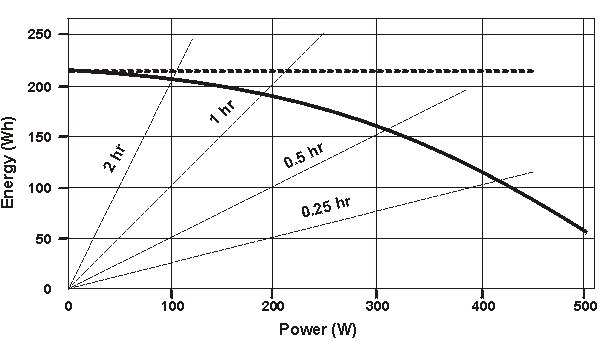
 |
A method is needed for assessing and displaying the performance of batteries so that the most suitable type and size can be chosen for a specific application. Two indicators are widely used:
Specific Energy: energy per unit weight or volume ("energy" = power x time of discharge to a specified end-voltage)
Specific Power: power per unit weight or volume ("power" = current x average discharge voltage)
A perfect cell would deliver a constant voltage and a set amount of charge, (and therefore energy), during complete discharge. However, there are internal losses associated with delivering a current, as illustrated in the following figure. In practice, the greater the current (and thus the output power), the greater the internal losses, most often transformed in heat, leaving less energy to be delivered to a load.

Energy-power characteristics of electrolyte cells.
Time Lines: Each point on an energy/power characteristic line corresponds to a particular discharge time and it is useful to include "time lines" on the graph, i.e. straight lines through the origin having a slope of time (energy = power x time).
For example, the 2-hour line cuts the cell characteristic at 100 W and 200 Wh, indicating that if 100 W were to be taken for 2 hours, the cell would be able to give 200 Wh of energy.
The 0.5 hour line, however, intersects the battery energy/power line at 300 W and 150 Wh, indicating that 50 Wh less energy is available at this rate of discharge.